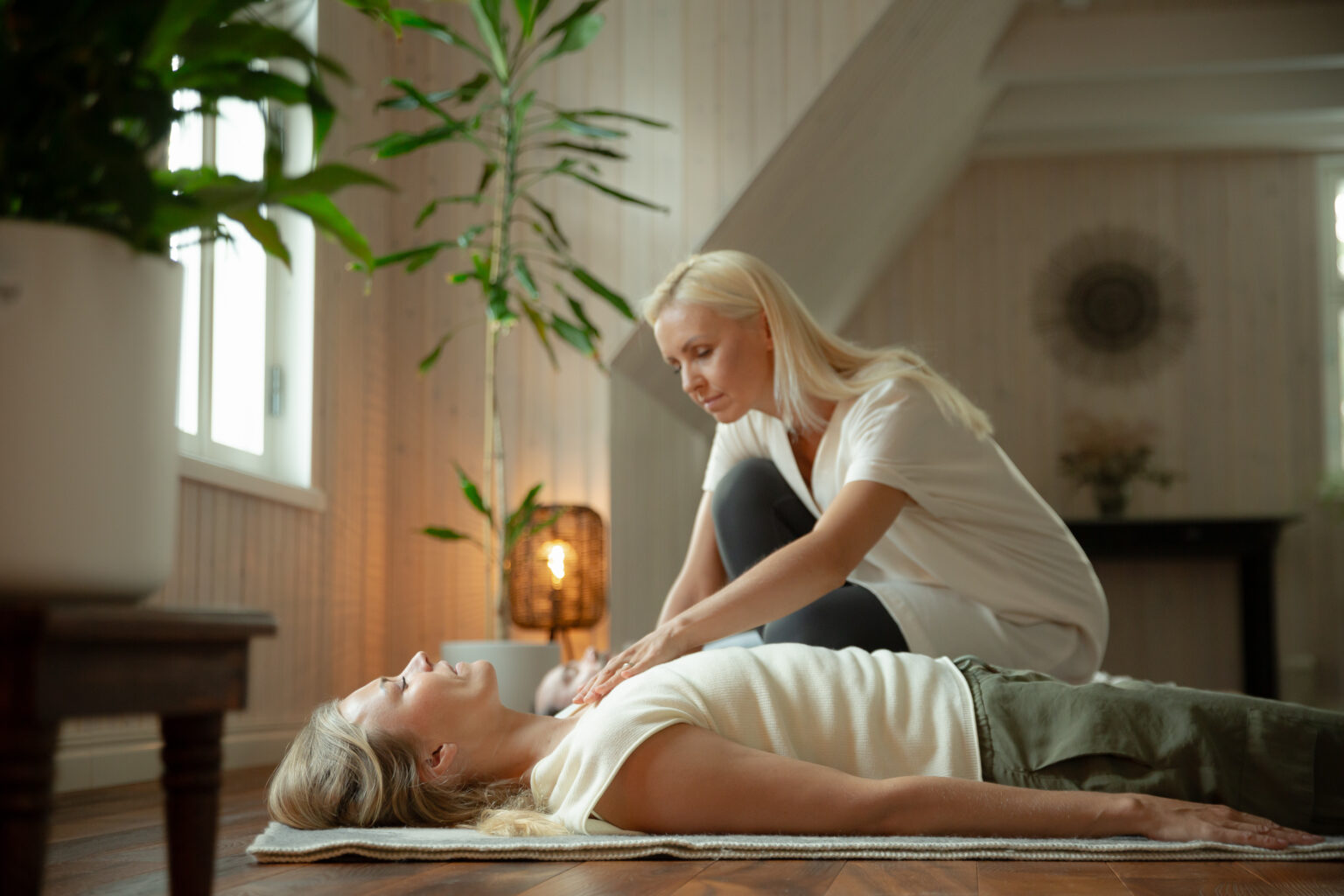Biodynamic Breathwork and Trauma Release System (BBTRS)
Biodynamic Breathwork and Trauma Release System (BBTRS) is an internationally accredited therapy based on specific breathing patterns, combined with conscious movement and special touch and bodywork techniques. The practice, consisting of six elements (breath, movement, sound, touch, emotions, and meditation), helps the body initiate a natural healing process and release traumas and chronic tensions.

In which cases can BBRTS help?
Reducing symptoms:
- Attention Deficit Hyperactivity Disorder
- Sleep apnea
- Anxiety
- Chronic fatigue
- Depression
- Difficulty concentrating
- Obsessive-compulsive disorder
- Physical/emotional pain
- Post-traumatic stress disorder
- Stress
- Stress-related medical conditions
- Trauma
- Insomnia
Supported aspects:
- Physical health
- Joy of life
- Body awareness
- Inner balance
- Relationships with others
- Creativity
- Intuition
- Health and well-being
- Mental clarity
- Self-awareness
- Relaxation
How does BBTRS work?

- Breathing: BBTRS uses deep connected breathing that activates specific muscle tension belts and emotional patterns. Sessions are structured as series to stimulate and balance the body and mind from head to toe.
- Movement: BBTRS employs both physical and creative movement exercises to allow vibration to occur and release stored energy in the body’s tissues. This may include opening connective tissue, releasing tension, and using dance therapeutically.
- Sounds: Different sounds – voice, recorded, and live music – have a significant impact on our nervous system and are great resources during sessions.
- Touch: BBTRS uses conscious touch on multiple levels, from the body’s energetic field to deep muscle contact, to increase awareness and support energy flow.
- Emotions: Gentle emotional release may be part of a BBTRS session, but it’s not the goal. You are supported in making contact with deeper feelings and sensations while returning to your comfort zone as needed.
Meditation. Meditation is something BBTRS® begins and ends with. It is used to support the practitioner’s presence and the client’s relaxation. It is also a restful state to which the mind and body often return after BBTRS® sessions.
BBTRS contraindications
- Pregnancy
- Under 16 years old
- High blood pressure
- Epilepsy
- Glaucoma
- Severe mental disorders
- Risk of heart attack
- Aneurysm
- Recent (within 1 month) surgeries and traumas
- Being under the influence of antidepressants, drugs, and alcohol
Useful to know
Before the session:
Drink plenty of water 3 days before the session, eat healthily, and avoid alcohol. Wear comfortable clothes for easy movement, sitting, and lying down.
After the session:
Integrating the lasting change into mental and physical state may take several days. You may feel pleasant vibrations in the body, slight dizziness, nausea, or emotional fluctuations. Drink plenty of water to help cleanse the body after the session and, if possible, allow yourself to rest calmly. Avoid coffee, black tea, alcohol, unhealthy food, drugs, smoking, and excessive stress.
Recommendations:
It’s recommended to attend sessions as a course, for example, once a week or every couple of weeks for 8 times. The course may help achieve deeper results and consolidate the changes achieved, but it depends on the individual.
BBTRS has evolved from Wilhelm Reich’s therapeutic approach to soft tissues and Peter Levine’s trauma healing models. It is recognized and accredited by the American Association of Drugless Practitioners and the Global Professional Breathwork Alliance.
Interesting scientific facts
Dr. Peter Levine’s study on somatic experiencing from February 2013 to October 2014 involved 91 volunteer patients. One group received standard care (4–12 guided exercise sessions for lower back pain), while the other group received 12 additional sessions of somatic experiencing. The treatment effects were evaluated using self-report questionnaires over 12 months. It was found that somatic experiencing therapy added to standard treatment had a significant impact on post-traumatic stress disorder and kinesiophobia compared to standard treatment alone. The results are promising, considering the complexity of the sample and the impact of the 12-month follow-up.
Patients suffering from chronic lower back pain are often dissatisfied with conventional medical care and seek alternative treatments. A study conducted in 2005 confirmed that patients with chronic lower back pain significantly improved with breath therapy. Changes in standard measures of pain and disability in lower back pain were comparable to the results of high-quality extended physical therapy. Breath therapy was safe. Qualitative data indicated improved coping skills and a new understanding of the impact of stress on the body.
